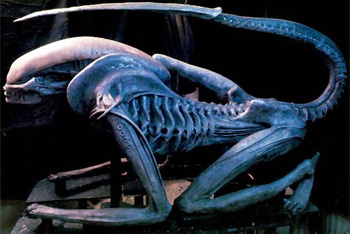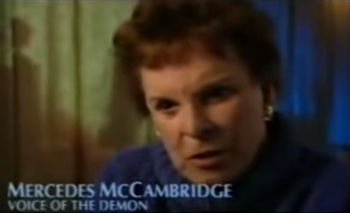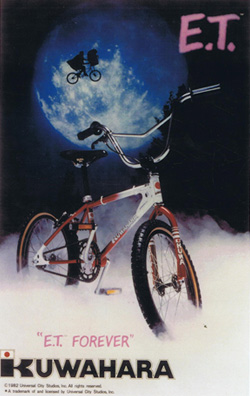5 Big-Time Players In Your Fav Movies Who Got No Credit

For some, making a movie leads to fame, wealth, and unlimited rides on Leonardo DiCaprio's yacht. Everyone else has to settle for a paycheck and having their names briefly flit across the screen as people rush out of the theater to beat traffic ... if they're lucky, that is. You see, Hollywood doesn't always bother with the whole "crediting people for their work" thing, even when said work resulted in some of the greatest cinematic moments ever. So let us try to correct that by telling you about how ...
The Company That Sculpts All The Batsuits Gets Perpetually Shafted
Thanks to the Eternal Age of Comic Book Movies, costume design has never been a more essential element of the movie-making process. But believe it or not, superheroes don't simply get their suits off the rack at H&M. For decades, one company has been creating the most impressive superhero suits out there, and they never get any freaking credit for it.
Don't Miss
Ironhead Studio, Inc. might be the biggest costume and creature design company in Hollywood right now, but you wouldn't know it from reading the names at the end of the movies. Ironhead not only designs but also crafts impossible-looking suits that still allow the actors to move their arms without opening a vein. Their dry cleaning wall includes pictures of Captain America, Iron Man, Thor, the Fantastic Four, Black Panther, and a buttload of X-Men. But their most lasting legacy has to be their work on many, many Batmen. The firm's founder, Jose Fernandez, has personally designed Batsuits for every cinematic Bruce Wayne except Christian Bale (whose costume was made by legendary designer Lindy Hemming) and Adam West (who we imagine brought his from home).
But despite their site being plastered with glowing reviews from producers, directors, and Wolverine himself, this is all the acknowledgment Ironhead ever gets. When Ironhead crafted all the costumes seen in Batman v. Superman: Dawn Of Justice (including Batman's favorite Halloween costume, "Goth Iron Man"), the crew didn't bother to stick around for the end credits. Since they're third-party freelancers -- the guys the on-set designers get in to do all the superhero-heavy lifting -- the studios are not contractually obligated to put their names in the credits, and so they don't.
Fortunately for Ironhead, there are now plenty of venues through which fans of their work can give them the credit they deserve: conventions. After Superman v. Batman, Fernandez decided to take his underappreciated show on the road, and he isn't shy about why. To prove to how much studios undervalue his work, he even showcases rejected designs that he thinks are way better than what they settled for. So if you ever want to see a Doomsday that doesn't look like a rejected mascot for a Halloween-themed breakfast cereal, Fernandez is your guy.
TheAlien's xenomorph was a fresh, wholly unique nightmare, in that they didn't copy it from an old legend or put a hockey mask on a regular dude. The genius madman who gave chest-birth to this abomination was H.R. Giger, one of the greatest conceptual artists of the 20th century -- or if you ask 20th Century Fox, some gofer who occasionally pitched in some ideas.
After not being invited to work on Aliens (James Cameron was scared of Giger putting even more of his freaky-deaky stamp on his fictional universe), Giger was delighted when Fox pleadingly approached him to start work immediately on David Fincher's Alien 3. What he didn't know was that Fox had made the same promises to another bunch of artists. Tom Woodruff Jr. and Alec Gillis, Fincher's on-set creature effects team, had their own ideas for the new batch of aliens. So while Giger was working diligently on a project he thought he was in control of, going so far as to build a life-sized alien in his basement for Fincher to replicate, Woodruff and Gillis were treating his work as nothing more than suggestions.

Giger finally felt the slap to the face when he discovered that he was only being credited for the "original alien design," implying he had not contributed to this new movie at all -- which means he got one fewer Oscar nomination on his resume. When he protested, Fox told him that they'd already printed the posters and press materials, and "it would be too late for changes now." After a lengthy legal slapfight, Giger's name was added to the VHS and LaserDisc versions of the movies, and he was granted merchandising royalties for the new alien designs -- a small moral victory compared to what he deserved.
Fox took this defeat with all the grace and style they're known for. When Alien: Resurrection rolled out two years later, Giger's name was wiped off the project completely, not even crediting him for the original design. To which Giger replied, "As for those responsible for this conspiracy: All I can wish them is an Alien breeding inside their chests, which might just remind them that the 'Alien Father' is H.R. Giger."

The Exorcist is about a young girl who gets possessed by a wiseacre demon who sounds like he was hired to roast the pope's funeral. The movie has a string of memorable performances, from Jason Miller as the stalwart priest to Linda Blair as the girl who ruined pea soup for an entire generation. And yet how many of you can name the actress who voiced Pazuzu, the greatest movie monster never seen?
You see, while making The Exorcist, director William Friedkin rightly figured that a kid wouldn't give the necessary gravitas to a thundering hellspawn. It's almost a whole other movie with Blair's real voice.
So the role of Pazuzu went to Mercedes McCambridge, an Oscar-winning actress, veteran of radio plays, and all-round tough lady. In a tiny recording booth, McCambridge went through hell and back to capture her devil. She chain-smoked and ate raw eggs to make her voice as low and snarly as possible, while her chronic bronchitis helped her nail all the wheezing and rasping. Encouraged by Friedkin, she let herself be tied to a chair in order to better feel little Regan's struggle. With her actual priest on site, she intentionally fell off the wagon after years of being sober so that she could release her inner demons. McCambridge wasn't merely voice acting; she was method voice acting, as if they'd made Ellen DeGeneres drink gallons of salt water for Finding Dory.
However, after ruining her body and soul to give us to one of the most pants-filling performances ever, McCambridge was shocked to see her name nowhere near the credits. When the actress confronted Friedkin after the premiere, he blamed the studio ... only to turn around and start claiming that McCambridge had asked not to be given a credit. You know, because actors are usually so shy.
According to McCambridge, Friedkin and Warner Bros. were pretending she didn't exist so that audiences and critics would think it was all Linda Blair's performance, assuming she would easily win an Academy Award (she didn't). Whatever the reason, McCambridge again released her inner demon, and after a furious lawsuit, the studio added her to the bill -- not as "the voice of the demon," but only as "and Mercedes McCambridge."

The Grandfather Of Sound FX Didn't Get A Single Credit (While He Was Alive, Anyway)
We all know that Hollywood is full of crap, but you probably don't realize how full of crap. Forget about the giant spaceships and explosions, even the sounds of steps and sliding doors are faked in a studio. The reason we don't notice is the genius of Jack Foley, the most influential artist in motion picture history without a single credit to his name.
In the mid 1920s, movies started experimenting with the brand-new sensation known as "sound." But boom microphones back then were only able to pick up dialogue and not much else, and studios wisely realized that audiences would have a hard time suspending their disbelief if the suddenly chatty people on screen kept silently gliding around like ghosts. When Universal asked its employees if anyone had any interest in figuring out how to add in the missing sounds, producer/writer/director Jack Foley stepped forward. Then he recorded that step forward, and movie sound design was born.
In the span of his 33-year career as a sound design artist, Foley discovered ways to replicate any sound in the world, mostly with household items. More importantly, his method and workshop ("Foley's Space") became the industry standard for producing natural sound effects. So if he's really a man who created and perfected an entirely new art style, why is his IMDb page so sad?

According to Foley's granddaughter, Hollywood figured that people didn't want to know that even the sound Clark Gable's footsteps made weren't his own, so they decided to keep sound effects their dirty little secret. Like his many sounds, Foley's lot in life was to never be noticed. He did get a happy ending, though. To honor the forgotten father of their craft, audio effects designers started referring to themselves as "foley artists," and that's been their official job title since the '80s. Since then, there likely hasn't been a single Hollywood movie that hasn't had Foley's name in its credits.
The Kids Who Actually Rode The Bikes In E.T. Are Lost To Time
In Hollywood, you never know how your star will rise. Harrison Ford was working as a set carpenter when George Lucas discovered him. So when eight young men were picked by Steven Spielberg to be in one of the most famous film scenes of all times, they must have thought it was going to change their lives. Unfortunately, their 15 minutes of fame didn't even last for a second.
The first thing Spielberg needed to shoot E.T.'s bike chase scene was, of course, bikes.

California bicycle distributer Howie Cohen was talked into supplying the movie with 25 high-speed Kuwahara BMX bikes in exchange for exclusive merchandising rights. This was the deal of a lifetime, seeing as he was competing with eight-inch action figures of an alien that resembled a sexually aroused bowel movement.
When delivering the bikes to the set, Cohen brought along his young friend Robert Cardoza, a BMX ace who was there to help the kid actors with their new wheels. When Spielberg asked for Cardoza's opinion on some of the stunts he wanted the kids to do, Cardoza laughed in the director's face, blurting out, "There's no way those kids will be able to do that!" After he demonstrated some tricks to prove his point, Spielberg decided he needed stuntmen for the job, so he asked Cardoza what he was doing for the next few weeks.
On Cardoza's recommendation, E.T.'s producers went to a local BMX spot and hired seven more riders, aged between 15 and 20. Those eight kids did all of the cool jumping, racing, and nearly-running-that-guy-over-ing during the chase sequence. Because of them, there wasn't a single ten-year-old who didn't want Elliot's flying bike for Christmas.

The movie was a hit. But the eight BMX riders? They were left in the dirt. When Cardoza and his friends left the preview screening they had been invited to, they hadn't seen their names anywhere in the credits. And so the people responsible for making BMX bikes the most wanted item for an entire generation of children faded back into obscurity. The magic of movies, everybody!
Cedric Voets would love to share credit with the many hard-working people at Cracked, but they all insist that their names are kept off his articles. For more of his inanities, do follow him on Twitter.
If you loved this article and want more content like this, support our site with a visit to our Contribution Page, please and thank you.
For more, check out 5 Real People Screwed By 'True-Story' Movies Based On Them and 5 Ways Batman's TRUE Creator Got Screwed Out Of His Legacy.
Also follow us on Facebook. Just trust us.